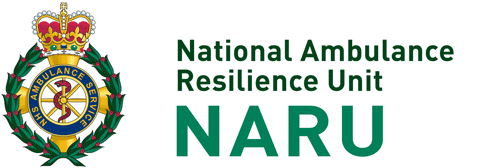‘Acid’ attacks have been increasing in some areas. The term ‘acid attack’ has been widely used in the media to describe the use of corrosive substances in assaults and robberies – often directed at the victim’s face.
Corrosive substances do include acids, such as sulphuric acid, but also alkaline, or caustic, chemicals such as sodium hydroxide (also called caustic soda). This kind of attack often causes chemical burns of the skin or eyes.
 New First Aid guidance for the public
New First Aid guidance for the public
The severity of a chemical burn can be reduced if action is taken as soon as possible to remove the chemical and contaminated clothing from contact with the skin or eyes. However, without appropriate care, helping yourself or others may lead to further injuries to the victim or contact injuries to the person helping them.
To help ensure that victims and bystanders know the best course of action to take in the event of an attack, NHS England today published a new page on NHS Choices – www.nhs.uk/acidburns
They are also working with the British Burns Association and the British Association of Plastic, Reconstructive and Aesthetic Surgeons (BAPRAS) to promote this graphic on social media and other channels.
Report, Remove, Rinse
This guidance has been developed by burns specialists and approved by the NHS, and sets out a clear and memorable set of actions – Report, Remove, Rinse – which, taken quickly but carefully, can help reduce the likelihood and severity of life-changing injuries.
How the NHS helps victims
The majority of victims of acid attacks suffer only minor burns. These can usually be treated by ambulance and local hospital A&E staff, and will heal well with good burn care, including regular dressing changes and checks to prevent infection.
For the minority of patients who suffer severe burns, in most cases they will be transferred to one of the small number of specialist burns centres. Most patients spend a number of days or weeks in these centres being treated and recovering.
These centres are staffed by burns specialists and plastic surgeons, and can draw on the expertise of a number of other health professionals including specialist occupational therapists, physiotherapists and mental health professionals who will oversee ongoing recovery. Specialist ophthalmology services and surgery may also be needed where a patient has suffered damage to their eyes.
Acid attacks and the NHS – in numbers
14 – victims treated in one of England’s 23 specialist burns centres in all of 2014.
20 – victims treated in specialist burns centres in the first six months of 2017.
22 – average number of days these victims need to spend in a specialist burns unit.
£34,500 – estimated cost of NHS care for victims needing specialist burns treatment, eye care, rehabilitation and mental health support.
408 – reported acid attacks in the 6 months to April 2017 according to the National Police Chiefs Council – all attacks require urgent medical attention.
21 – percentage of victims (where age was recorded) who are under 18.
More information
For more information please get in touch with the NHS England Stakeholder and Public Affairs team on england.externalcomms@nhs.net or 0113 8248638.

